Fix: iPhone Photo Import Failure ‘Something went Wrong’
You may fail to import iPhone pictures through Microsoft Photos if the installation of the Photos app is corrupt. Moreover, the incompatibility between the HEIC format & Windows may also result in the error under discussion. The issue arises when a user tries to import iPhone pictures through Microsoft Photos but fails to do so.
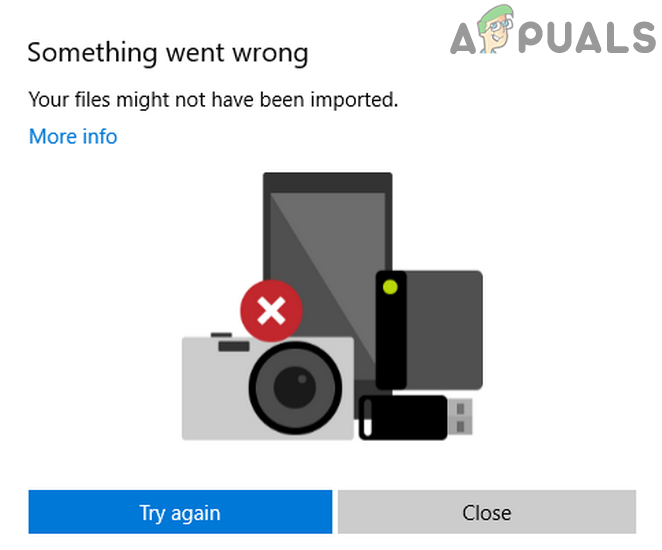
Before moving on with the solutions, make sure you are using the official iPhone cable to transfer the data & the cable does not move/disconnect during the import process (try the cable on a different USB port). Moreover, check if your iPhone is not running out of storage & is not in battery saving mode. Also, make sure your phone does not lock (you may have to disable auto-lock) nor its screen turns off (it is better to keep the photos app running on your iPhone) during the import process. Furthermore, check if updating Windows, Microsoft Photos (update through the Microsoft Store), & iPhone to the latest build solves the issue. Additionally, make sure your iPhone and system are connected to the same Wi-Fi.
Solution 1: Disable Hardware Acceleration of Microsoft Photos
You may encounter the error at hand if Microsoft Photos is using hardware acceleration to pace up things but this can lead to incompatibility between the Windows OS & iPhone. In this case, disabling the hardware acceleration of Microsoft Photos may solve the problem.
- Launch Microsoft Photos & click on three horizontal ellipses (near the top right of the window).
- Now, select Settings and then disable Use Hardware-Accelerated Video Encoding When Available (under Video).
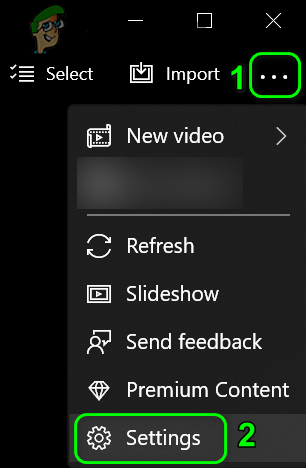
Open Microsoft Photos Settings - Then check if you can complete the import.

Disable Hardware Acceleration of Microsoft Photos - If not, put your iPhone in airplane mode & then check if it solves the issue.
Solution 2: Set the Startup Type of Apple Mobile Device Service to Automatic
You may encounter the error at hand if the Apple Mobile Data service is stuck in operation. In this context, changing its startup type to Automatic & restarting the service may solve the problem.
- Press the Windows logo key and type Services. Then right-click on Services & in the sub-menu, choose Run as Administrator.
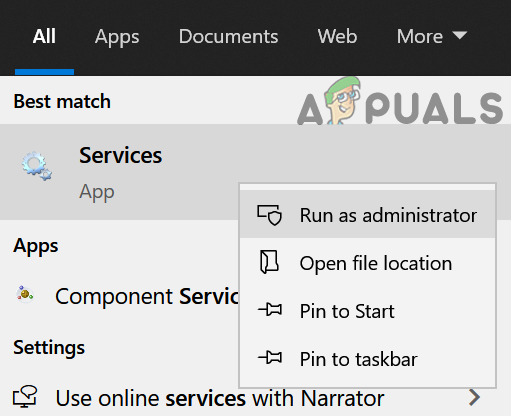
Open Services as Administrator - Then double click on Apple Mobile Device service (ADMS) & open the dropdown of Startup Type.

Open Properties of Apple Mobile Device Service - Now select Automatic & click on Stop.

Open the Startup Type of Apple Mobile Device Service to Automatic and Stop it - Then click on Apply/OK & in the Services window, right-click on the Apple Mobile Device service.
- Now click on Start and then check if you can import the pictures.
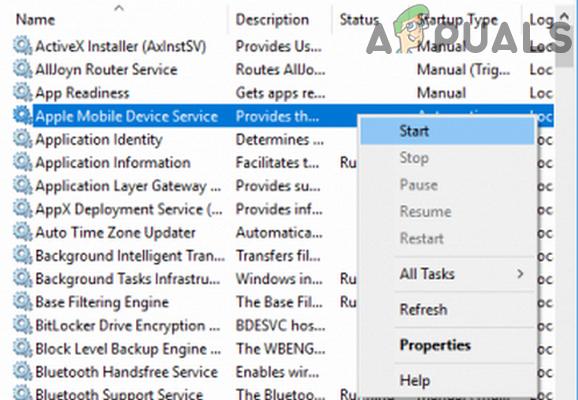
Start Apple Mobile Data Service
Solution 3: Enable Home Sharing in the iTunes
If nothing has worked for you, then using the Home Sharing feature (which enables different system sharing aspects and permissions) of iTunes can be used to clear the import glitch.
- Launch iTunes (make sure you are signed in with your Apple ID) & open File.
- Now choose Home Sharing & then select Turn on Home Sharing.

Open Home Sharing in iTunes - Then check if you can complete the import with Microsoft Photos.
Solution 4: Disable/Remove the Conflicting Applications
The Microsoft Photos application may fail to import the photos if an application on your system is blocking access to a system resource/process essential for the operation of Microsoft Photos. In this scenario, disabling/removing the conflicting applications may solve the problem. Antivirus applications (like Windows Defender and Webroot) and Microsoft Teams are known to create the issue.
Warning: Proceed with extreme caution and at your own risk as disabling the antivirus of your system may expose your system and data to threats that are not limited to viruses and trojans.
- Temporarily disable antivirus of your system. Do not forget to disable the Windows Defender as well.
- Now check if the import issue is resolved. If so, add an exception for Microsoft Photos in the antivirus settings & then make sure to re-enable the antivirus.
- If not, hit the Windows key and choose Settings. Now open Apps and expand Microsoft Teams.

Open Apps in Settings - Then click on the Uninstall button and follow the prompts to uninstall Teams.
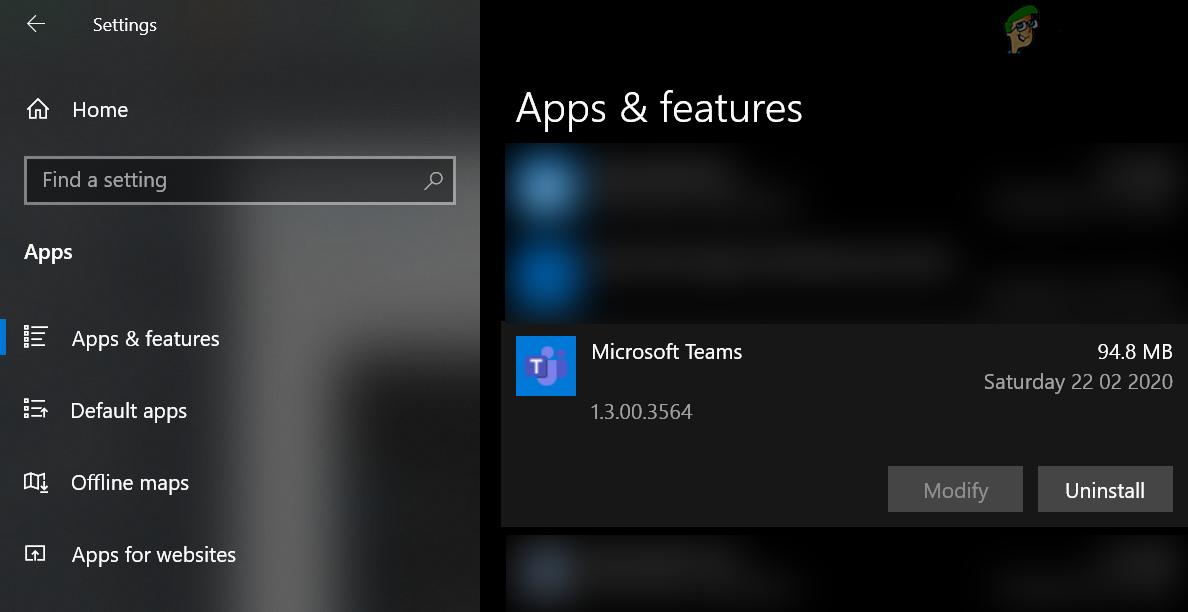
Uninstall Microsoft Teams - Now check if there is another application titled Microsoft Teams Downloader/Installer, if so, then uninstall it as well to check if it solves out the problem.
Solution 5: Repair or Reset the Microsoft Photos Application
You may fail to import the pictures if the installation of Microsoft Photos is corrupt. In this case, repairing or resetting the Microsoft Photos application may solve the problem.
- Hit the Windows key and select Settings. Now open Apps and expand Microsoft Photos.
- Then open Advanced Options and click on the Repair button (you may have to scroll a bit to find the option).
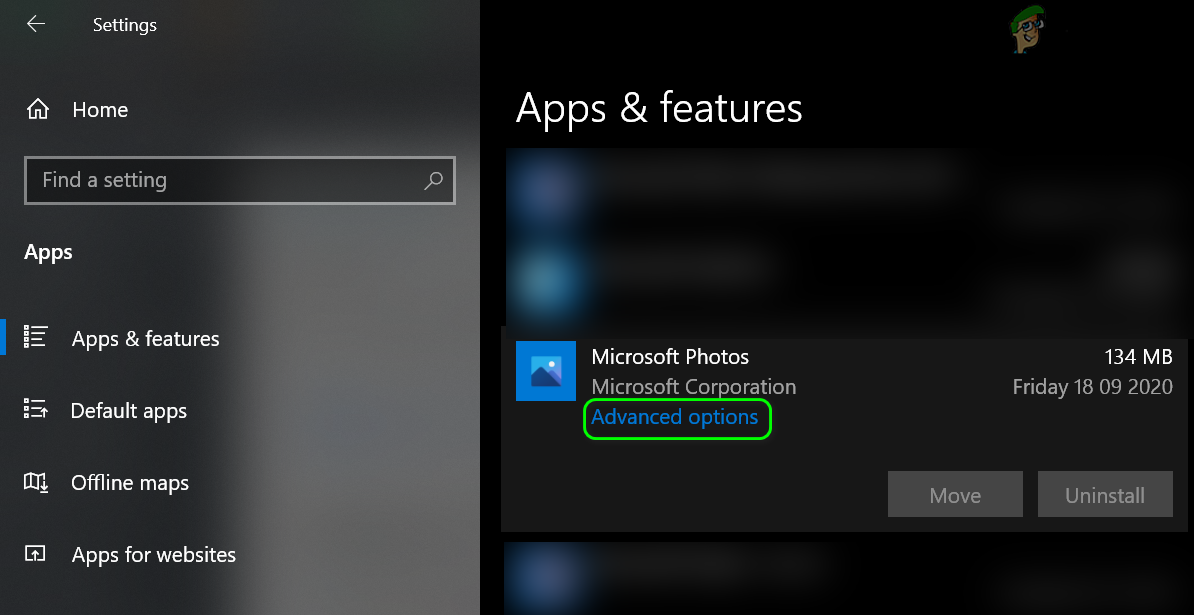
Open Advanced Options of Microsoft Photos - Now check if the photos’ import issue is resolved.
- If not, repeat steps 1 to 3 to open Advanced Options of Microsoft Photos and click on the Reset button (the Application data will be lost, do not worry, photos/videos will be unharmed).
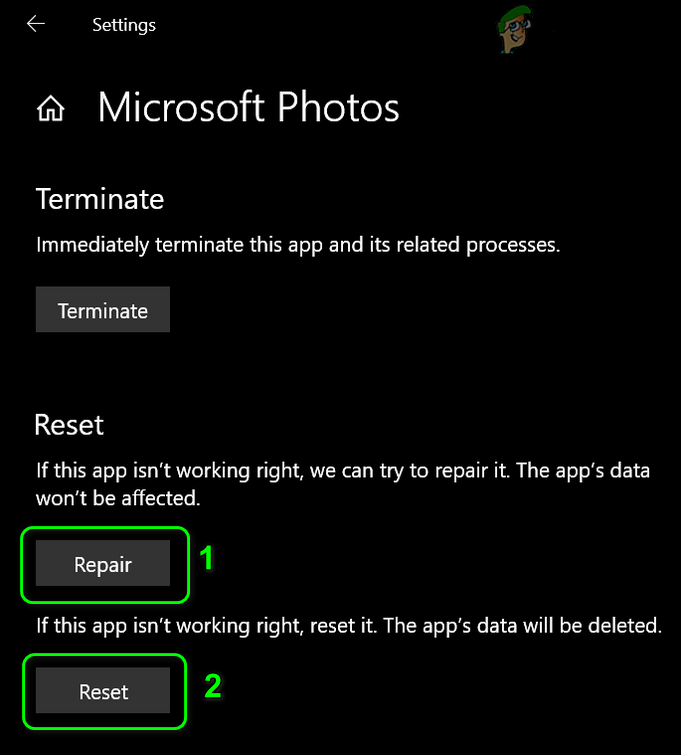
Repair or Reset Microsoft Photos - Then check if the import issue is resolved (you may have to click a few times on the Retry button in the Photos’ import wizard).
Solution 6: Change Permissions of the Import Folder
You may encounter the error under discussion if the permissions of the folder, where you want to import the photos, bar you from doing so. In this scenario, giving your user the Full Control permissions on the import folder may solve the problem. Before attempting the solution, check if importing to the default import location i.e., the Pictures folder of your system solves the issue.
Warning: Proceed at your risk as editing security permissions of a folder require a certain level of proficiency and if not done properly, you may cause everlasting damage to your data/system.
- Right-click on the import folder (e.g., Pictures folder) and choose Properties.
- Now navigate to the Security tab and click on the Edit button. If you cannot edit the security permissions of the folder, you may have to take ownership of it.
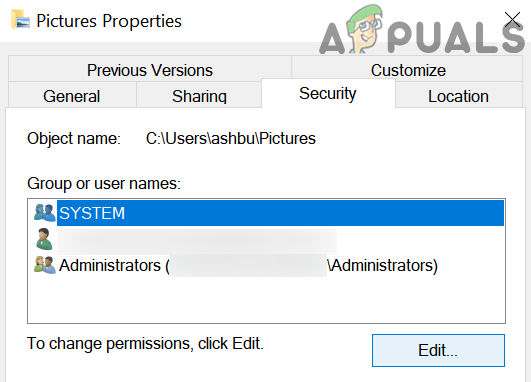
Edit Security Permissions of the Picture Folder - Then select your user account and click on Full Control (if it is already at Full Control, then remove it and apply the changes and then add back the Full Control to check if it solves the issue). If your user account is not shown, click on the Add button and then on the Advanced button. Now click on the Find Now button and then double click on your user name. Then apply your changes and make sure it has Full Control on the import folder.
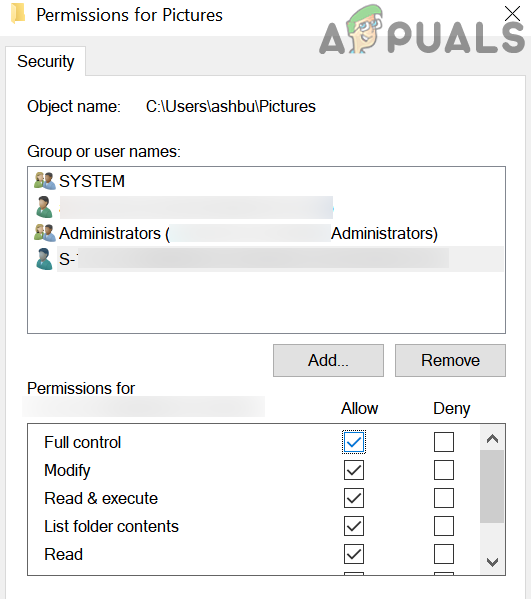
Allow Your User Account Full Control on the Pictures Folder - Now, check if Microsoft Photos are working fine.
- If not, then check if adding and giving Full Control to “Everyone” solves the issue.
- If not, then open Properties of the import folder (step 1) and navigate to the Customize tab.
- Now click on the Restore Default button and then click on Apply/OK buttons.

Restore Defaults of the Pictures Folder - Then check if the Microsoft Photos issue is resolved.
- If not, open the Security tab of the import folder (steps 1 to 2) and remove all accounts there except System, administrator/administrators, or your user account to check if it solves the issue. If so, then you may have to edit the security permissions of the sub-folders accordingly.
Solution 7: Exit OneDrive and Sign Out of Microsoft Photos
You may encounter the error under discussion if OneDrive is hindering the operation of Microsoft Photos. This can be especially true if your OneDrive storage is full or near to full and the size of the import you are trying is more than the storage capacity of OneDrive. In this case, exiting OneDrive and signing out of Microsoft Photos may solve the problem.
- Open the extended menu of the system tray and click on the OneDrive icon.
- Now click on Help & Settings and select Close OneDrive.
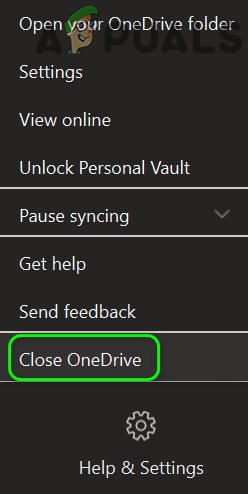
Close OneDrive - Then confirm to close OneDrive and press the Windows key.
- Now search for Microsoft Photos and then, in the search results, select Photos.
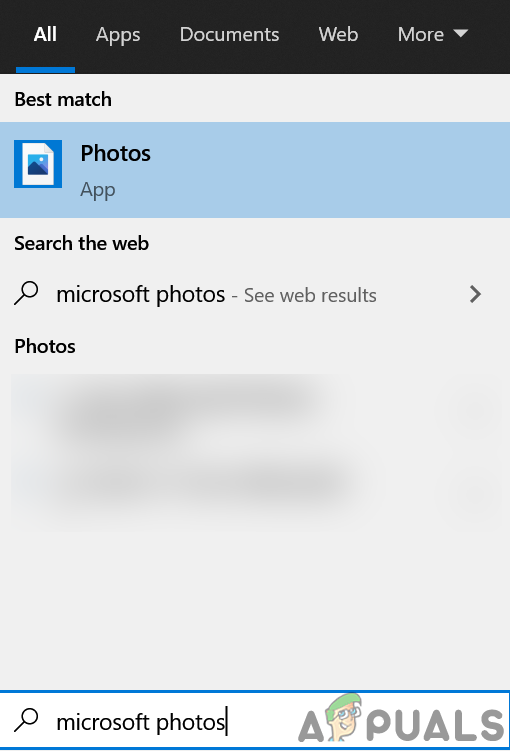
Open Microsoft Photos - Then click on three horizontal ellipses and click on your user name.

Open Your User Account in Microsoft Photos - Now, in the account window, click on Sign Out and then confirm to sign out of the account.
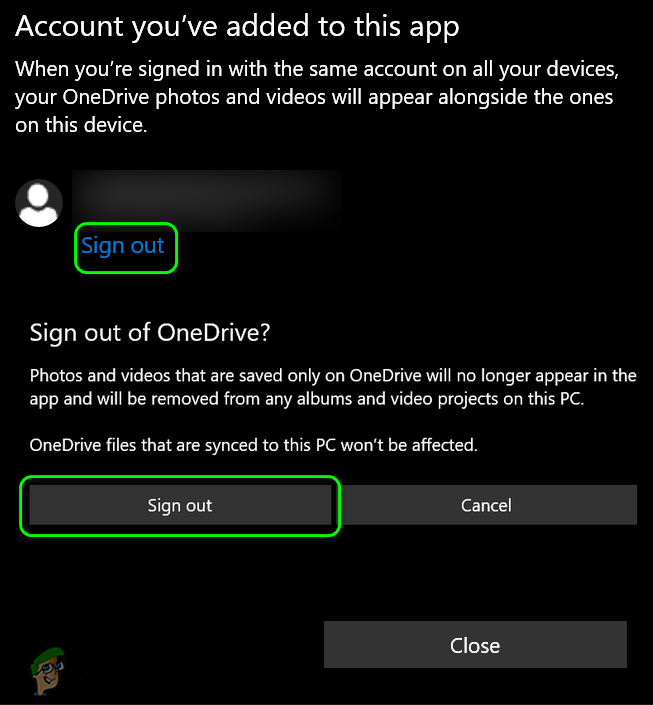
Sign Out of Microsoft Photos - Then check if the import issue is resolved.
Solution 8: Enable Keep Originals in the iPhone Settings
Apple has introduced the new HEIC format for photos on its devices. But Windows does not fully support this file type yet and when importing, your iPhone tries to convert these files into JPEG but if it fails to do so (due to less storage or compatibility issues), then it may cause the error under discussion. In this context, enabling Keep Originals in the iPhone Settings may solve the problem. But keep in mind that the HEIC file format takes less storage space on your device.
- Launch the iPhone Settings and select Photos.
- Now enable the option of Keep Originals (by default set to Automatic) under Transfer to Mac or PC and disable iCloud photo.
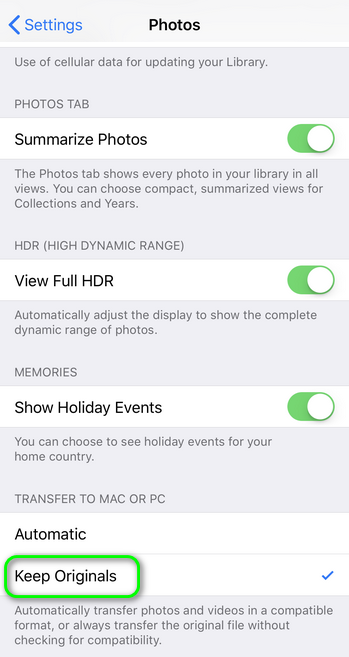
Enable Keep Originals in iPhone Photos Settings - Now close running apps by pressing the home button twice and then swipe up. Then reset the Microsoft Photos application (as discussed in solution 5).
- Now plug your iPhone into the PC and allow it to trust your PC.
- Now check if the import issue is resolved (check if some MOV files are having the same names as HEIC files, then try to import without these MOV files which are the result of the live function of your camera). If so, then you might want to disable HEIC in the Camera settings (Settings>>Camera>>Format>>Most Compatible) or live function of it.
- If the issue is not resolved, then check if installing the HEIC extension solves the issue for you.
Solution 9: Remove the Corrupt Pictures
You may fail to complete the import if any of the pictures (that you are trying to import) is corrupt. In this case, identifying & removing the corrupt pictures (the import wizard does not tell you which picture is corrupt) may solve the problem.
- Connect your iPhone to your PC (trust your PC on the iPhone screen) & open File Explorer (if the import dialog box appears, cancel it).
- Now open the folder (usually, internal storage>>DCIM folder) where your required pictures are present.

Copy the Photos of iPhone Through the File Explorer - Then copy these pictures/folders & paste them to a folder on your system (e.g., on a folder on your desktop).
- Now, wait for the completion of the copying process. If the process gives an error, then check which file is causing the error.
- Then, on your iPhone, remove that file (or place it at a different location, if possible) & then repeat the process to remove another corrupt file.
- Once all the corrupt files are removed, check if you can complete the import wizard in the Photos app.
If the issue persists, then check if you can import the photos while your phone is powered off or without the SD card. If you are importing to a network location like NAS, then check if that network share is accessible in the File Explorer. Moreover, confirm if using small batches of photos solves the issue. If the issue is still there, then you may have to use the Windows File Explorer to import the files (right-click on iPhone in my PC window & choose Import Pictures and Videos) or drag-drop files on your system’s folder.
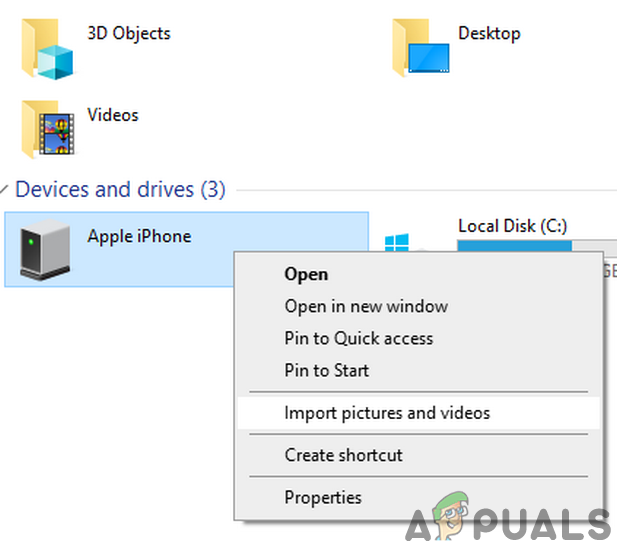
If the issue persists, then check if the use of any of the system cleaner applications clears out the error. You can also try a 3rd party application like OneDrive, Google Photos, iMazing, FastStone Image Viewer, etc., or use a dual-ended USB device.





